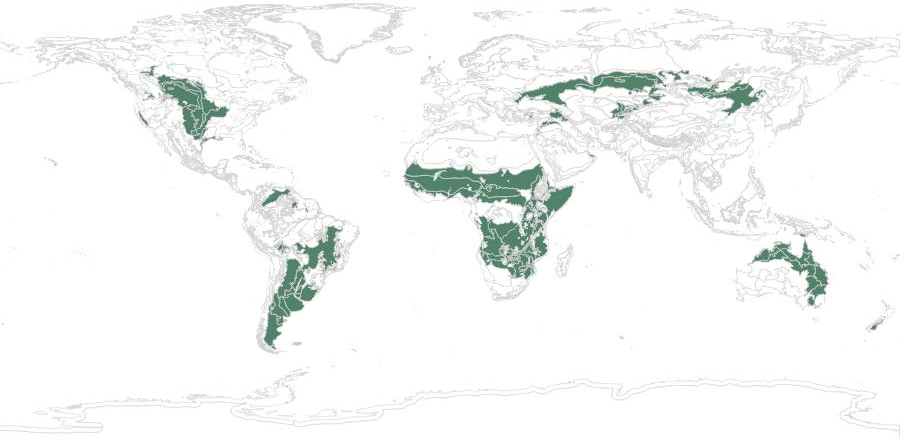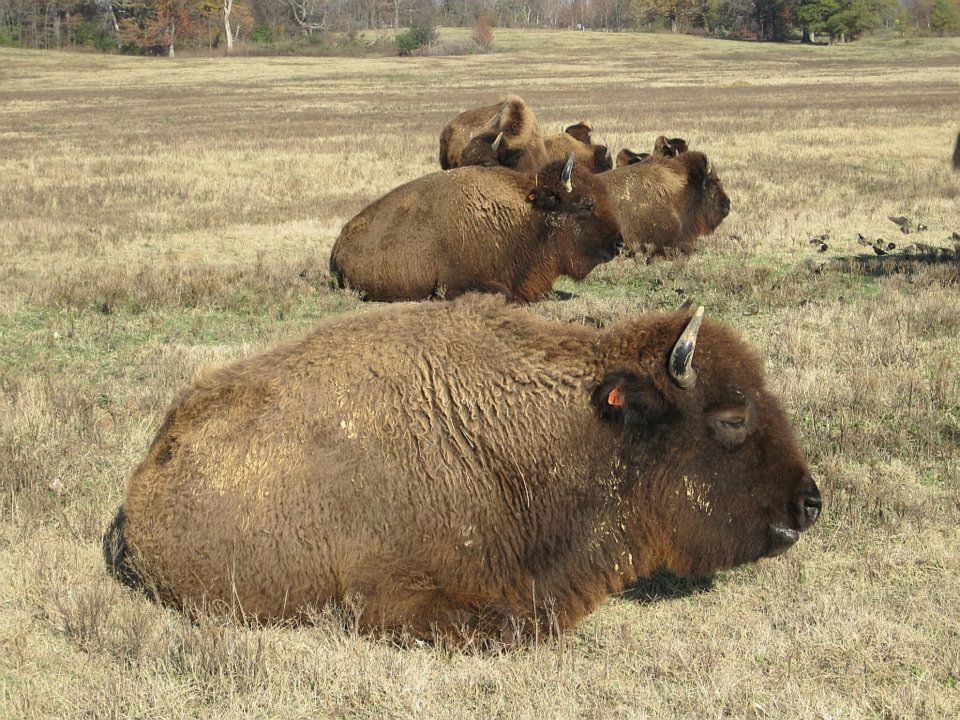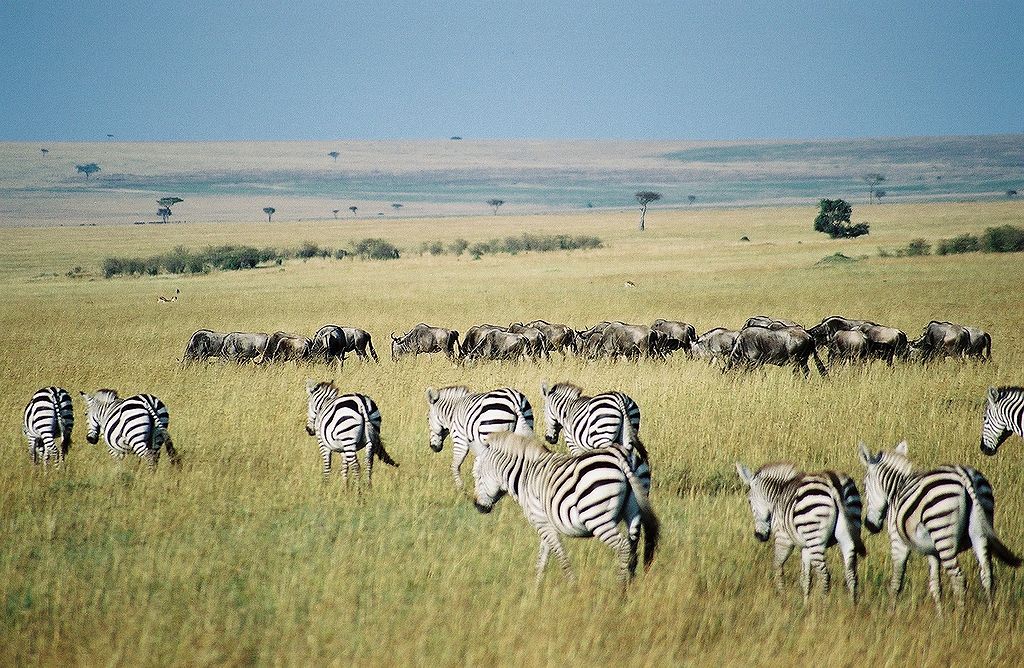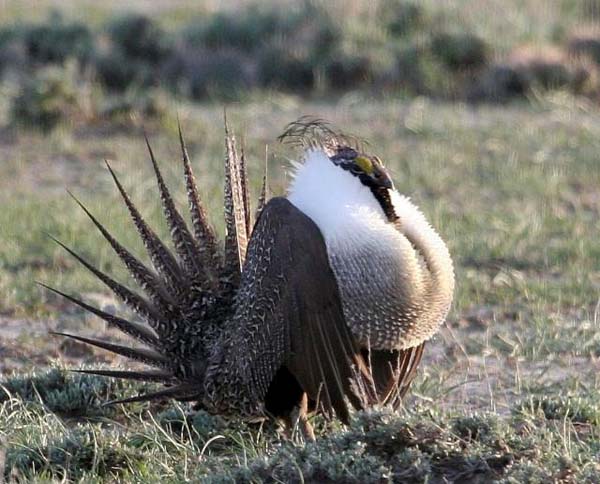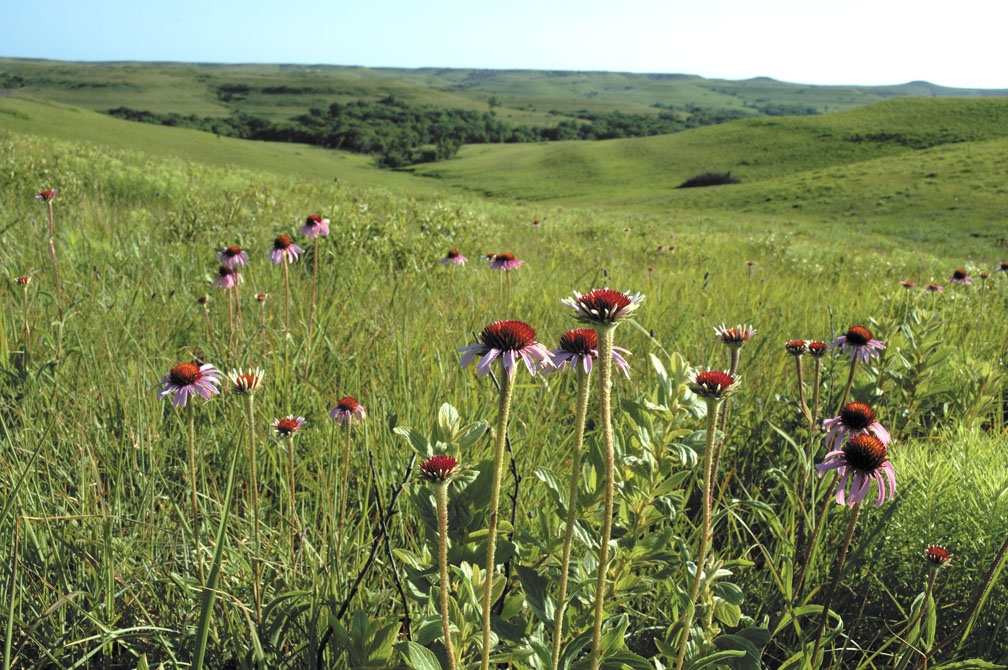TEMPERATE AND TROPICAL GRASSLANDS, SAVANNAS, AND SHRUBLANDS
LOCATIONS
ECOLOGY POCKET GUIDE SUMMARY
The Temperate and Tropical Grasslands, Savannas, and Shrublands ecoregion is a vast and dynamic landscape shaped by the delicate balance between rainfall, fire, and grazing. These ecosystems stretch across continents, from the African savannas to the North American prairies, supporting an extraordinary diversity of life adapted to thrive in open, sun-drenched spaces. For designers and planners, these ecoregions offer valuable lessons in resilience, resource management, and the creation of spaces that embrace both open expanses and seasonal changes. The scattered trees and grasses of savannas and grasslands demonstrate the potential for balancing built environments with natural open spaces, while the role of fire in maintaining these ecosystems inspires innovative strategies for fire-adaptive and resilient design. The simple yet diverse structure of these landscapes—rich in ecological functions despite their sparse appearance—encourages efficient, resource-conscious design that respects the rhythms of nature.
ECOSYSTEM FRAMEWORK
Temperate and Tropical Grasslands, Savannas, and Shrublands
Abiotic Components: Grasslands and savannas are characterized by seasonal rainfall, with wet and dry periods defining much of their ecology. Temperate grasslands, such as the North American prairies, experience cold winters and hot summers, while tropical savannas, like those in Africa, have warm temperatures year-round with pronounced wet and dry seasons. Soils in these regions are typically fertile, though their nutrient content can vary depending on the balance between plant growth, grazing, and fire. Water availability is a key limiting factor, driving the patterns of plant growth and animal behavior.
Biotic Components: The vegetation in these ecoregions is dominated by grasses, such as tallgrass species in temperate prairies and short, drought-resistant grasses in tropical savannas. Scattered trees and shrubs, such as acacias in African savannas and oaks in North American grasslands, are common, adapted to withstand drought and fire. These ecosystems support a wide variety of herbivores, including large grazing animals like bison, antelope, elephants, and zebras, as well as smaller mammals and ground-dwelling birds. Predators, such as lions in the savannas and wolves or coyotes in temperate grasslands, play a crucial role in maintaining the balance of herbivore populations.
Trophic Structure: The food web begins with grasses and shrubs as the primary producers, supporting a vast array of herbivores from small rodents to large ungulates. In turn, these herbivores are prey for apex predators, such as lions, cheetahs, and hyenas in tropical savannas, and wolves, coyotes, and eagles in temperate grasslands. Scavengers, including vultures and jackals, play a vital role in recycling nutrients, while decomposers like fungi and bacteria break down organic material, returning essential nutrients to the soil.
Nutrient Cycles: Nutrient cycling in these ecosystems is closely linked to the roles of fire and grazing. Periodic fires clear away dead plant material, releasing nutrients back into the soil and promoting the growth of grasses. Grazing animals contribute to nutrient distribution through their waste and movement, while decomposition processes are driven by bacteria, fungi, and insects. Water availability also shapes nutrient cycling, with the wet season triggering rapid plant growth and the dry season slowing down decomposition rates.
Interactions: Grasslands, savannas, and shrublands are shaped by the interactions between fire, grazing, and competition for resources. Fire-adapted plants, such as certain grasses and shrubs, thrive in environments where periodic fires prevent the establishment of dense forests, maintaining the open landscape. Grazing animals play a crucial role in controlling plant growth, while predators regulate herbivore populations, ensuring that overgrazing does not occur. Mutualistic relationships, such as seed dispersal by animals and pollination by insects, also support the biodiversity of these ecosystems.
Adaptation and Resilience: Plants and animals in these ecoregions are adapted to withstand drought, fire, and grazing. Grasses have evolved deep root systems that allow them to quickly regenerate after grazing or fire, while many shrubs and trees have thick bark or the ability to resprout after being burned. Animals in these regions have adapted to the seasonal availability of resources, with many migrating in search of water and fresh grazing grounds during the dry season. These adaptations offer insights into designing systems that are resilient to disturbance, such as fire-adaptive landscapes and drought-tolerant materials for urban environments.
System Boundaries and Scale: Grasslands, savannas, and shrublands are found across temperate and tropical regions on every continent except Antarctica. Temperate grasslands include the North American prairies, the Eurasian steppes, and the pampas of South America, while tropical savannas are found in Africa, South America, and Australia. The boundaries of these ecosystems are determined by rainfall patterns, altitude, and latitude, often transitioning into deserts, forests, or wetlands depending on the geography. These ecosystems cover vast areas and play critical roles in carbon storage, biodiversity support, and water regulation.
Additional Ecologically Integrated Design Considerations
Be mindful of Venturi and turbulence effects as a result of building form - leverage building form for friction-free flow of wind
Allow for occasional natural burns of grasslands and savannas - incorporate fire readiness into building design and material selection
Contribute to the main ecological asset of the grassland and savanna ecosystems - the soil. Protect and build soil wherever possible.
Prairie topography is the result of thousands of years of wind interacting with geology - design into it, not contrary to it.
Biodiversity responds to niche availability - generate a diversity of microclimates throughout the site with more and less wind exposure to promote biodiversity.
Mimic the disturbance of large migratory herbivores to promote cycles of nutrient incorporation and aeration.
REFERENCES
Scholes, R. J., & Walker, B. H. (1993). An African Savanna: Synthesis of the Nylsvley Study. Cambridge University Press.
Sala, O. E., Lauenroth, W. K., & Golluscio, R. A. (1997). Plant Functional Types in Temperate Semi-Arid Regions. Functional Plant Ecology, 217-233.
Bond, W. J., & Keeley, J. E. (2005). Fire as a Global 'Herbivore': The Ecology and Evolution of Flammable Ecosystems. Trends in Ecology & Evolution, 20(7), 387-394.
Anderson, R. C. (2006). Evolution and Origin of the Central Grassland of North America: Climate, Fire, and Mammalian Grazers. Journal of the Torrey Botanical Society, 133(4), 626-647.
Parr, C. L., & Andersen, A. N. (2006). Patch Mosaic Burning for Biodiversity Conservation: A Critique of the Pyrodiversity Paradigm. Conservation Biology, 20(6), 1610-1619.


